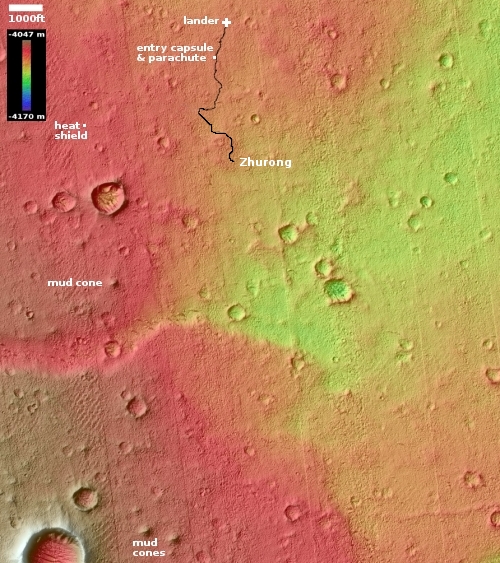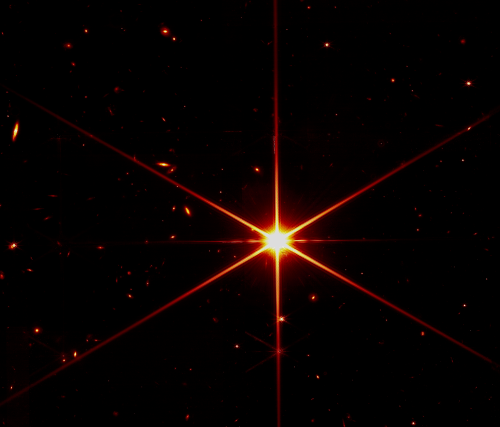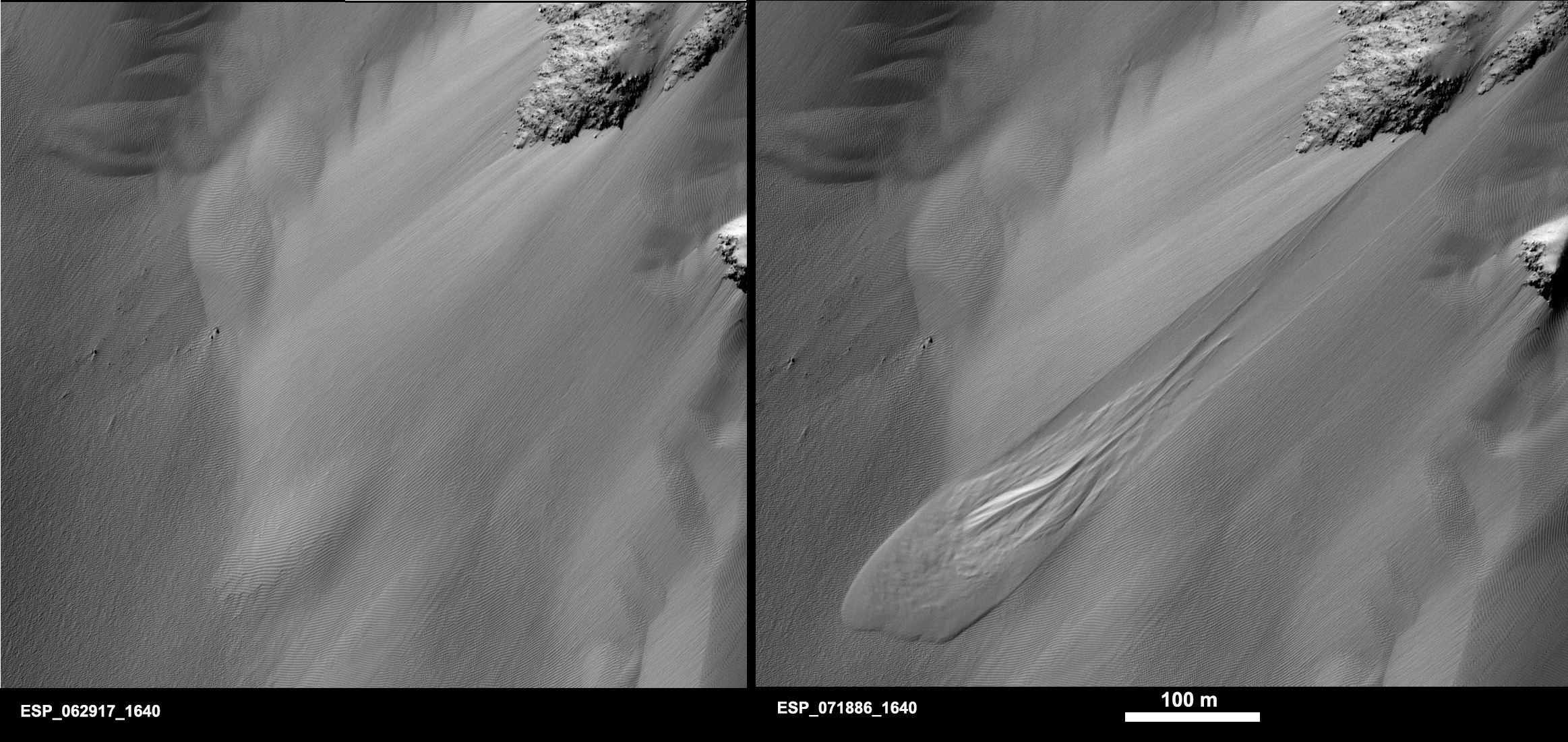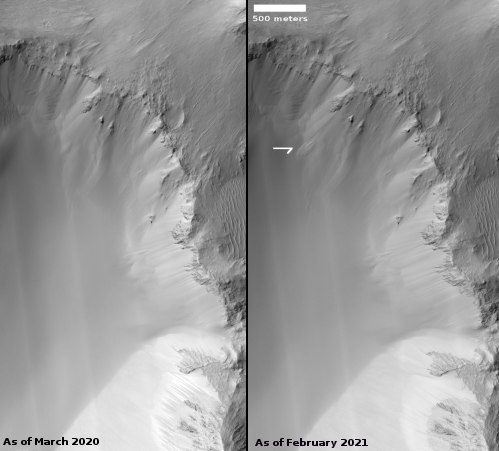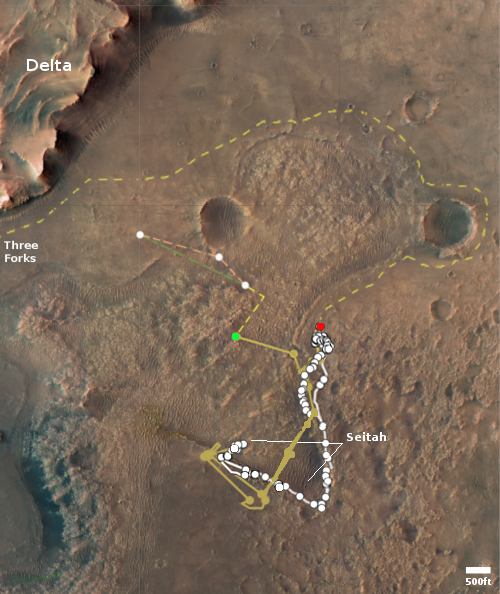Scientists: Enceladus’ tiger stripes come from underground ocean
The uncertainty of science: Using a new computer model, scientists now think they have shown how on the Saturn moon Enceladus pressure from an underground ocean can push through cracks to produce geysers on the surface.
Rudolph and his colleagues ran a physics-based model to map the conditions that could allow the cracks from the surface to reach the ocean and cause the eruptions. The model accounts for cycles of warming and cooling that last on the scale of a hundred million years, associated with changes in Enceladus’ orbit around Saturn. During each cycle, the ice shell undergoes a period of thinning and a period of thickening. The thickening happens through freezing at the base of the ice shell, which grows downward like the ice on a lake, Rudolph said.
The pressure exerted by this downward-expanding ice on the ocean below is one possible mechanism researchers have proposed to explain Enceladus’ geysers. As the outer ice shell cools and thickens, pressure increases on the ocean underneath because ice has more volume than water. The increasing pressure also generates stress in the ice, which could become pathways for fluid to reach the surface 20-30 kilometers away.
You can read the paper here.
Be warned: This is only a model. Moreover, its conclusions suggest that this mechanism will not work on Jupiter’s moon Europa, which has many planet-wide crack-like features that suggest (as yet unconfirmed) a bubbling up from below.
The uncertainty of science: Using a new computer model, scientists now think they have shown how on the Saturn moon Enceladus pressure from an underground ocean can push through cracks to produce geysers on the surface.
Rudolph and his colleagues ran a physics-based model to map the conditions that could allow the cracks from the surface to reach the ocean and cause the eruptions. The model accounts for cycles of warming and cooling that last on the scale of a hundred million years, associated with changes in Enceladus’ orbit around Saturn. During each cycle, the ice shell undergoes a period of thinning and a period of thickening. The thickening happens through freezing at the base of the ice shell, which grows downward like the ice on a lake, Rudolph said.
The pressure exerted by this downward-expanding ice on the ocean below is one possible mechanism researchers have proposed to explain Enceladus’ geysers. As the outer ice shell cools and thickens, pressure increases on the ocean underneath because ice has more volume than water. The increasing pressure also generates stress in the ice, which could become pathways for fluid to reach the surface 20-30 kilometers away.
You can read the paper here.
Be warned: This is only a model. Moreover, its conclusions suggest that this mechanism will not work on Jupiter’s moon Europa, which has many planet-wide crack-like features that suggest (as yet unconfirmed) a bubbling up from below.



